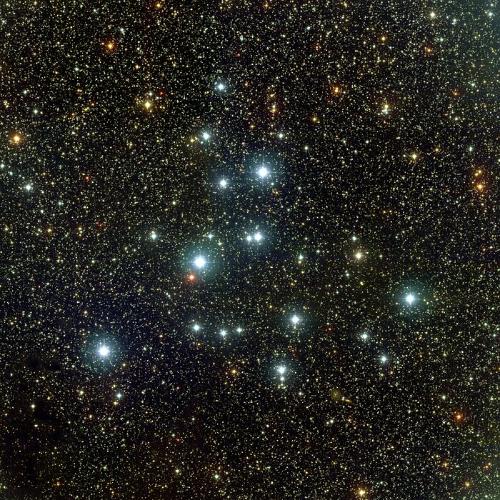Messier 39 (M39) is an open star cluster located in the constellation Cygnus, also known as the Swan. With its relatively bright appearance and rich stellar population, it is one of the more prominent open clusters in the Milky Way, making it a popular target for amateur astronomers. Situated about 800 light-years from Earth, M39 is considered relatively close within the galactic scale and can be observed with the naked eye under dark sky conditions.
M39 was catalogued by the French astronomer Charles Messier in 1764 as part of his catalogue of deep-sky objects. This catalogue, compiled to help comet hunters distinguish between comets and other celestial phenomena, included some of the most prominent deep-sky objects known at the time.
Physical Characteristics
M39 is a relatively young open star cluster, with an estimated age of around 300 million years. It contains dozens of stars that formed from the same molecular cloud, and it is part of the Milky Way’s disk population. While not as densely packed as some other open clusters, M39 has a loose structure that still presents a visually compact grouping of stars. Its stars are primarily blue and white, indicating their youth and higher temperature compared to older, redder stars in more evolved clusters.
The cluster spans about 32 arc minutes in the sky, which is roughly the apparent size of the full Moon. Its stars are arranged in a somewhat irregular shape, giving it a distinctive, scattered appearance. Despite the loose structure, M39’s brightness and relatively rich stellar population make it an easy-to-identify and visually striking object through binoculars or a small telescope.
Observation
With an apparent magnitude of 4.6, M39 is bright enough to be visible to the naked eye under dark sky conditions, though it appears more clearly through binoculars or a small telescope. Its brightness allows it to stand out against the backdrop of stars in Cygnus, making it an easy object to locate for observers in the Northern Hemisphere.

M39 is best observed from July to October, when the constellation Cygnus is well-placed in the evening sky. During this time, Cygnus is high in the sky, reaching its peak in August, which offers the best conditions for viewing the cluster. The constellation rises in late spring and sets in early winter, making M39 visible for most of the year, but with optimal viewing occurring in the late summer and early autumn months.
Overall, Messier 39 is a beautiful and relatively nearby open star cluster that is a favourite among amateur astronomers and stargazers. Its rich stellar population, compact appearance, and visibility make it an excellent target for observation and a fascinating object in the constellation Cygnus.



